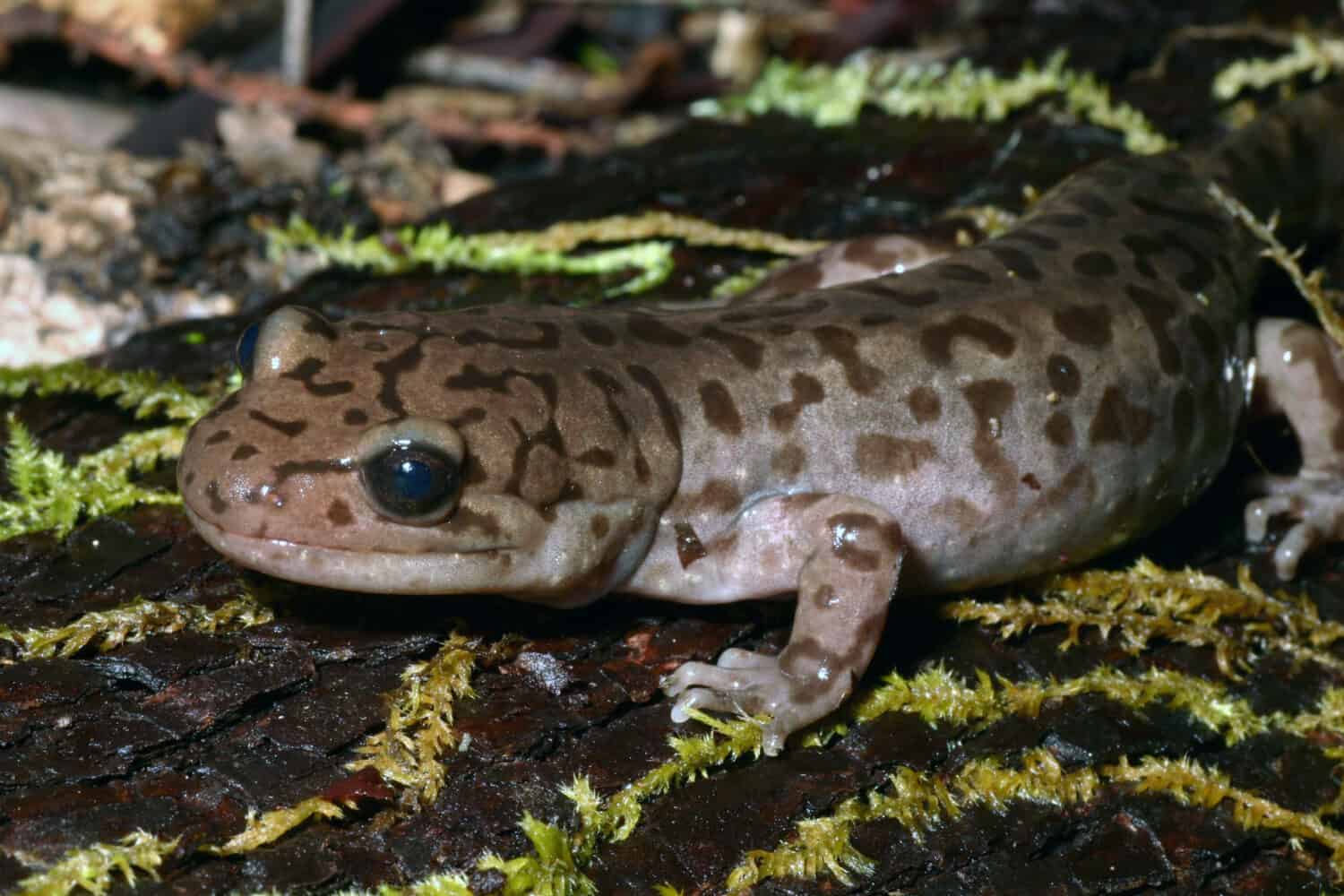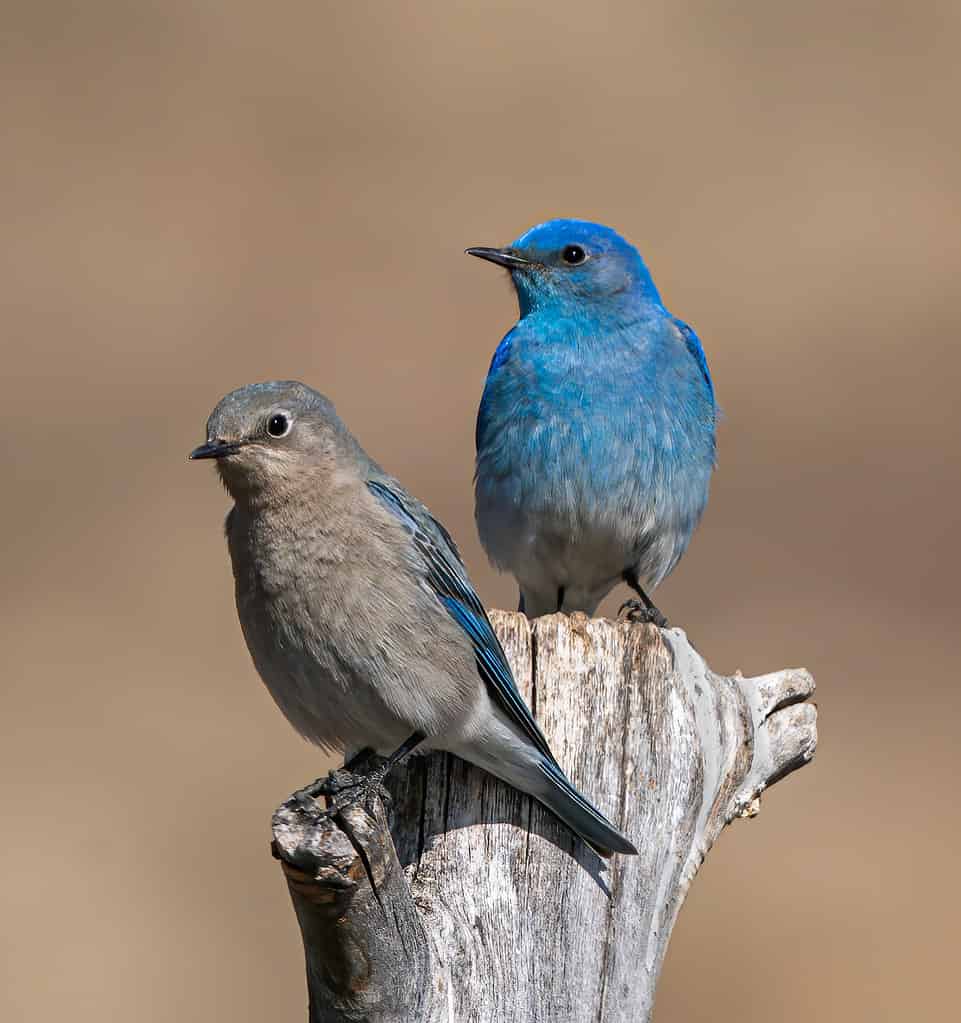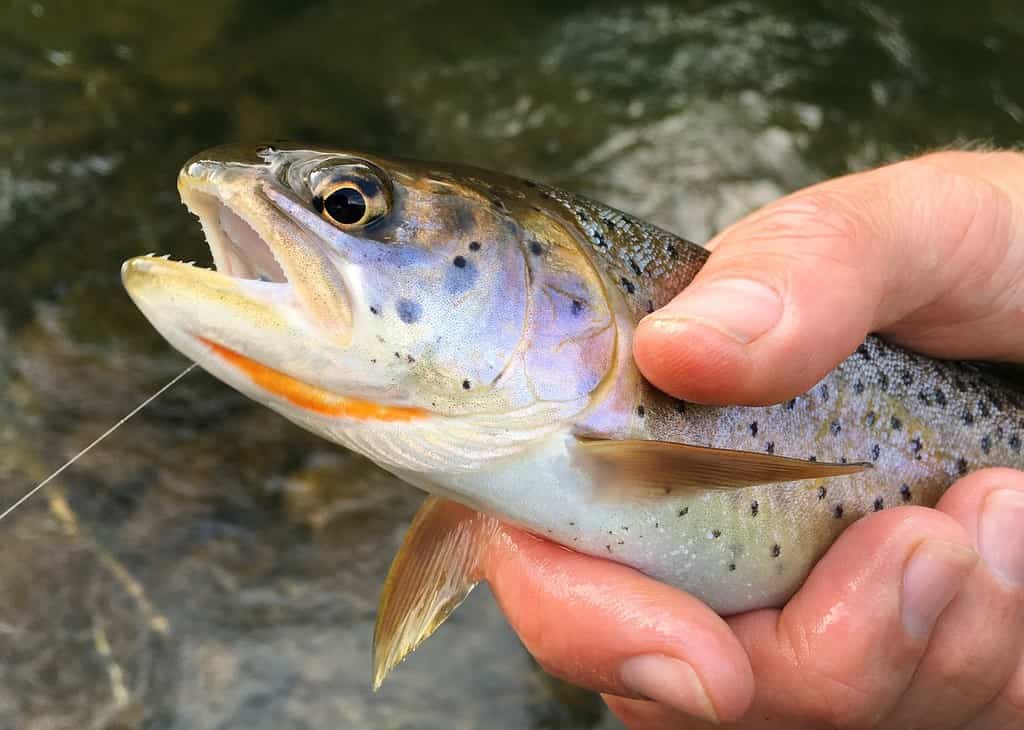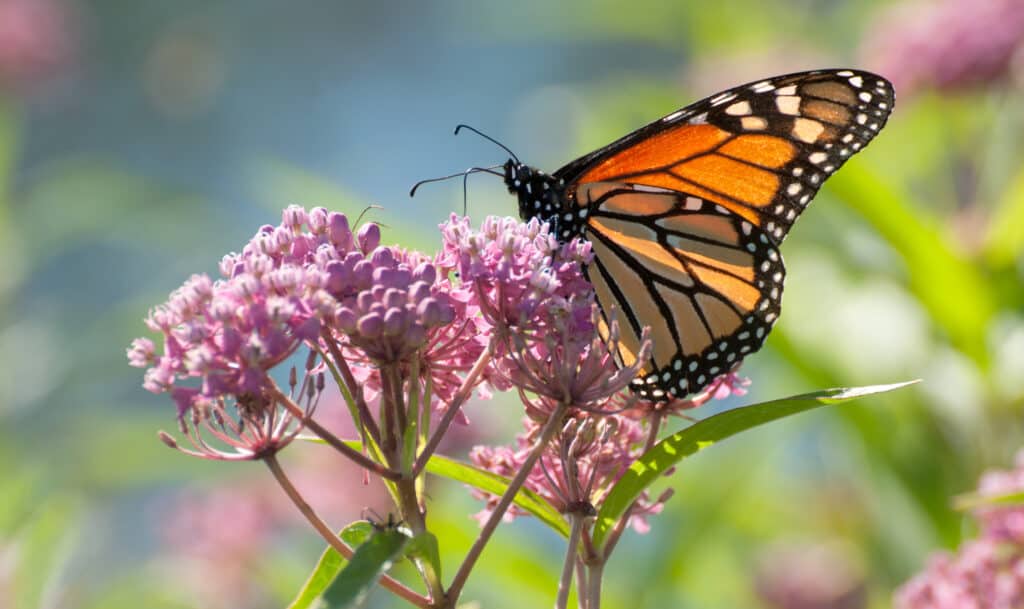Like every other state, Idaho has chosen an assortment of emblems to represent the state on a national and global stage. States often choose emblems as examples of what makes the state unique or brings the residents pride. Idaho has numerous state emblems. These include a state flag, a state dance (the square dance), a state flower (the syringa), a state fossil (the Hagerman Horse Fossil), a state gem (Idaho star garnet), a state tree (western white pine), a state fruit (huckleberry), and a state vegetable (potato). Among these state emblems are multiple official state animals. This article introduces you to the six diverse creatures that are the state animals of Idaho. These include a state amphibian, state bird, state fish, state insect, state raptor, and even a state horse.

All of these state animals of Idaho represent an element of Idaho culture and wildlife, made an official symbol through the state government’s legislation. Let’s dive in to learn more about these six special state animals of Idaho now!
State Amphibian: Idaho Giant Salamander

First on our list of state animals of Idaho is the state amphibian. This creature is the Idaho Giant Salamander, also known by its scientific name Dicamptodon aterrimus. The Idaho Giant Salamander is the largest salamander species that lives in the state of Idaho. Not only that, but this species of salamander primarily lives within the geographic region of the U.S. where Idaho is located. Though you may find some Idaho Giant Salamanders in nearby states, most members of this species live inside Idaho’s state borders, making it a special part of Idaho’s wildlife.
Idaho adopted the Idaho Giant Salamander as the official Idaho state amphibian on April 2, 2015. This decision came after consistent lobbying by a fourteen-year-old Idaho resident named Ilah Hickman, who advocated for the state amphibian bill for five years!
About the Idaho Giant Salamander
Idaho Giant Salamanders are closely related to several other salamander species, including the California Giant Salamandar (Dicamptodon ensatus), Cope’s Giant Salamandar (Dicamptodon copei), and the Coastal Giant Salamandar (Dicamptodon tenebrosus). These creatures live in the forested areas of northern and central Idaho, where they live in and nearby forest rivers and waterways.
Idaho Giant Salamanders are dark and have intricate markings. Their body colors vary between brown, purple, tan, grey, and copper in color. Idaho Giant Salamanders have several other identifiable features, including their thick body, big head, and a fourth toe on the hind foot with only three segments. While the adults vary in size, they typically reach between 7 and 12 inches long.
Their coloration can make it hard to spot these creatures since they hide under rocks and logs in their forest habitat and may blend into their natural surroundings. However, if you think you have spotted one of the elusive Idaho Giant Salamanders, watch out! These animals do have teeth and may bite when threatened.
State Bird: Mountain Bluebird

This pair of mountain bluebirds are both state birds of Idaho.
©Richard Seeley/Shutterstock.com
Next on the list of state animals of Idaho is the state bird. The state bird of Idaho is the mountain bluebird (Sialia arctcia). The mountain bluebird belongs to the thrush family of birds, which are small or medium-sized passerines or songbirds. This unique species was adopted as the state bird of Idaho by the legislature in 1931. Originally, students in Idaho nominated the mountain bluebird for consideration as the state bird.
About the Mountain Bluebird
The mountain bluebird lives in grassland habitats throughout Idaho and other parts of the American West. This bird is a member of the thrush family and prefers to live in wider and more open areas compared to other bluebird species. Mountain bluebirds also inhabit higher elevation areas, in the mountains and northern hills of Idaho. They also breed in prairies, including in Idaho’s alpine tundra, which is a flat and treeless area.
It can also withstand colder winter habitats, which is important when living in a place like Idaho, which can have bitterly cold weather. However, this bluebird only remains in the northern parts of Idaho during the relatively warmer months. As the seasons progress into winter, the mountain bluebird migrates south to parts of California and Mexico.
Male mountain bluebirds are vibrant shades of sky blue. In contrast, female mountain bluebirds are gray-colored with blue wings and tails. They typically grow to be about six inches long. These birds eat berries and insects, which they may swoop down from the sky to catch mid-air. When the mating time comes, female bluebirds build their nests independently without help from the male bluebirds. In these nests, the female mountain bluebirds will lay from six to seven eggs with blue-white shells.
State Fish: Cutthroat Trout

Bonneville cutthroat trout swim in Idaho and are one of three subspecies of Idaho’s state fish. Check out the distinctive orange throat slash that inspired the fish’s name!
©Matt Jeppson/Shutterstock.com
Another state animal of Idaho is the state fish. The Idaho state fish is the cutthroat trout (Onchorhynchus clarki). The cutthroat trout is native to Idaho, along with several other species of trout, the rainbow trout and the bull trout. In Idaho, Westslope cutthroat trout swim in the water of northern and central Idaho. The Yellowstone cutthroat trout swims in the cold waterways of eastern Idaho. Lastly, the Bonneville cutthroat trout lives in the lakes and rivers in Idaho’s southeastern corner.
The cutthroat trout was designated as the state fish of Idaho in 1990. When adopted by the legislature, the reason for choosing the cutthroat trout was based on its historic significance as the first-recognized trout of Idaho and a key resource for settlers who landed in Idaho. Because the cutthroat trout is a native fish and is sensitive to degraded environments and polluted water, the fish also serves as a “barometer” for the quality of life in Idaho. With that in mind, the Idaho state legislature chose the fish to help build awareness of the importance of caring for aquatic habitats and natural resources while memorializing Idaho’s culture.
About the Cutthroat Trout
Cutthroat trout swim natively in the western United States, and swim in areas west of the Rocky Mountains to the Pacific Ocean, and from Alaska to New Mexico. In Idaho, you are likely to find most cutthroat trout in the northern, eastern, and southeastern parts of the state. There, you can find them living in a range of habitats, from small mountain streams to rivers and large lakes.
There are three subspecies of cutthroat trout that swim natively in Idaho’s rivers. Together, these three are considered Idaho’s official state fish. These subspecies are the Bonneville, Westslope, and Yellowstone cutthroat trout. Idaho cutthroat trout spawn in May or June, during the spring runoff when the fish can reach higher-elevation spawning grounds across the Middle Fork tributaries. The trout will migrate more than 80 miles away from their downstream winter habitat to spring spawning grounds, then back to the mainstem over the summer season.
Cutthroat trout gained their name for the red or orange slash of color that appears under their lower jaws. In the southeastern parts of Idaho, where Bonneville cutthroat trout live, Bear Lake cutthroats have ample prey to devour and may reach as big as 15 pounds.
State Insect: Monarch Butterfly

The
monarch butterfly
, the state insect of Idaho, depends on milkweed plants.
©Nancy Bauer/Shutterstock.com
In 1992, Idaho chose the monarch butterfly (Danaus plexippus) as the state insect. This butterfly gained its name from early European settlers who came to North America and named the butterfly after the “monarch,” William, Prince of Orange, who eventually became the King of England. The monarch butterfly became the state insect of Idaho after the advocacy of fourth-grade students from the Cole Elementary School in Boise. However, Idaho is not the only state that chose the monarch butterfly to be the state insect! Along with Idaho, Alabama, Illinois, Minnesota, Texas, Vermont, and West Virginia selected the monarch butterfly as a state emblem.
About the Monarch Butterfly
Monarch butterflies travel many miles over the course of a lifetime, which could be only a few weeks or up to a year. In fact, monarch butterflies may migrate over distances of 1,200 to 2,800 miles or more, as they travel from northern parts of the country to mountain forests in central Mexico, where they hibernate during the winter from approximately November to March. The North American monarch butterflies vary in the eastern and western populations. Idaho’s monarch butterflies live west of the Rocky Mountains. These western monarchs migrate between Idaho and California’s coast during the fall, getting food from trees, nectar, and milkweed plants.
Adult monarch butterflies have wings in a brilliant orange-red color, with black veins and white spots along the edges of the wings. You can distinguish male from female butterflies by the larger size of male monarchs and the larger black dots. Typically, a monarch butterfly’s wingspan reaches between 3.7 and 4.1 inches.
Monarch butterflies are highly dependent on milkweed plants. Milkweed is the only plant on which monarchs lay eggs, and it is the only food source that monarch caterpillars will eat. Female monarch butterflies lay their eggs on the bottom of milkweed plants. Once they hatch, the monarch larvae then feed on the plants. The complete metamorphosis process takes 3 to 6 weeks. While monarch butterflies have beautiful orange and black wings with white spots, monarch caterpillars also have a distinctive appearance with white, black, and yellow stripes.
State Raptor: Peregrine Falcon

Peregrine falcons, the state bird of Idaho, are powerful fliers and aggressive predators of smaller birds and mammals.
©Harry Collins Photography/Shutterstock.com
In addition to the state bird, Idaho has a category of “state raptor” on the list of state animals of Idaho. The creature chosen for this honor is the peregrine falcon (Falco peregrinus). Idaho selected the peregrine falcon as the state raptor in 2004. In addition to being called a “peregrine falcon,” the species Falco peregrinus is also called a “duck hawk,” “great-footed hawk,” and “wandering falcon.” This state symbol also appears on the Idaho state quarter.
Peregrine falcons joined the endangered species list due to environmental factors and the use of pesticides, which damaged the peregrine falcon population in the U.S. However, thanks to the protection of falcon nesting places and the rehabilitation of birds to the wild, peregrine falcons exited the Endangered Species List in 1999. Today, the population of peregrine falcons is stable, but these unique birds still enjoy protection under the Migratory Bird Treaty Act.
About the Peregrine Falcon
The peregrine falcon is known for its fast flying, its rapid hunting dive, its ability to soar to great heights, and its migration across vast swaths of territory each year. In fact, “peregrine” means wanderer, and could refer to the fact that some peregrine falcons may travel as much as 15,000 or 16,000 miles each year. Peregrine falcons live in mountainous regions, such as those across Idaho, as well as in river valleys and even in cities and towns.
The peregrine falcon grows to have a body that is about 15 to 20 inches across, with a 36 to 42-inch wingspan. Of any bird of prey, peregrine falcons have one of the widest geographic distributions, living across the world in a vast range of habitats. These powerful, large birds have long, broad, and pointed wings. Their tails are relatively short. The colors of their feathers are blue-gray above, black on the head, and white on their face. Their underparts have gray barring.
Peregrine falcons primarily eat medium-sized birds, as well as small mammals such as bats, rats, mice, and squirrels.
State Horse: Appaloosa

The Appaloosa is the state horse of Idaho.
©iStock.com/Anara55
Today, twelve U.S. states selected horse breeds serving as the official state horse. Idaho is one of these twelve. The state horse of Idaho is the Appaloosa, an American horse breed recognizable for having a spotted coat, striped hooves, and mottled skin. These horses have a long history in the development of the American West, including in Idaho.
Historians believe that Spanish settlers introduced horses to North America during their exploration of the continent. Horses became widespread, including among native populations, who became sophisticated horse breeders and horse people. In fact, native tribes in the geographic area now known as the states of Washington, Oregon, and Idaho may have been the first people to breed horses for specific traits like intelligence, speed, endurance, and other characteristics. One of these tribes was the Palouse. When European settlers arrived, they began referring to these horses as “palouse” horses, then “palousey” horses, and eventually, “appalousey.” This became the “Appaloosa.” The Appaloosa is also known as the “Nez Perce Horse,” after another native tribe involved in the breed’s original development.
The Appaloosa horse (Equus ferus caballus) was selected as the state horse of Idaho by the 1975 legislature.
About the Appaloosa
Appaloosa horses are widely-recognized thanks to their distinctive appearance. In history, native tribes bred these horses to be adaptable, fast, versatile horses that could traverse rugged mountain terrain. Since Appaloosas were bred in the canyons, mountains, and rocky land of Idaho and other northwest parts of the U.S., they developed traits that could help these horses to thrive in a difficult geography.
Today, Appaloosas are still favorites among breeders and riders alike, due to their sturdiness and amenable disposition. According to modern breed standards, Appaloosas should have straight, lean heads, pointed ears, muscular builds, deep chests, sloping shoulders, and short and straight backs. Their coat patterns may change greatly over the course of a horse’s lifetime, with each horse having a unique marking pattern unlike that of any other horse.
Appaloosa coats vary in color and may have coat color patterns. Some of the most common coat patterns are:
- Spots: a horse with white or dark spots on their body
- Snowflake: a horse that has a dark body and white spots
- Leopard: a white horse that has dark spots
- Roan: a coat of intermixed light and dark
Summary of the 6 State Animals of Idaho
| Number | Official Title | Animal |
|---|---|---|
| 1 | State Amphibian of Idaho | Idaho Giant Salamander |
| 2 | State Bird of Idaho | Mountain Bluebird |
| 3 | State Fish of Idaho | Cutthroat Trout |
| 4 | State Insect of Idaho | Monarch Butterfly |
| 5 | State Raptor of Idaho | Peregrine Falcon |
| 6 | State Horse of Idaho | Appaloosa |
The photo featured at the top of this post is © Gregory Johnston/Shutterstock.com
Thank you for reading! Have some feedback for us? Contact the AZ Animals editorial team.







